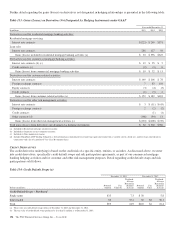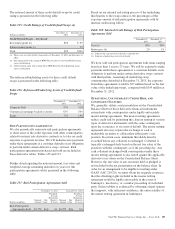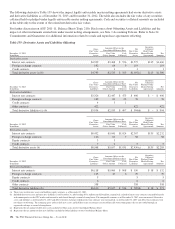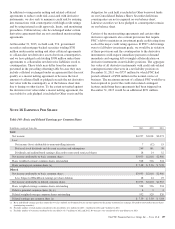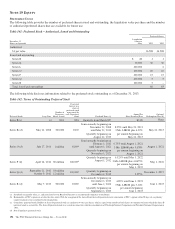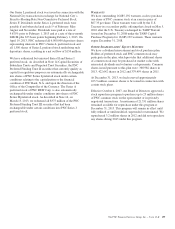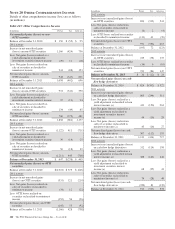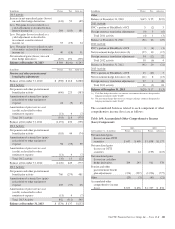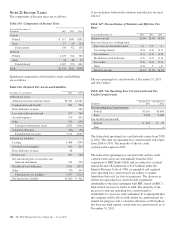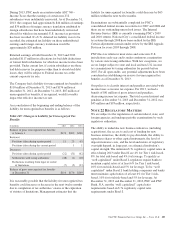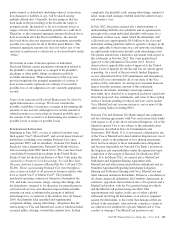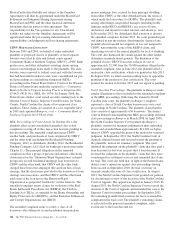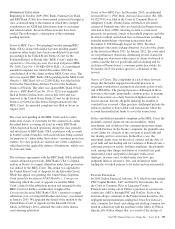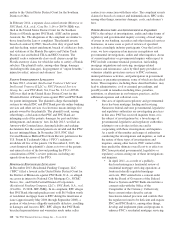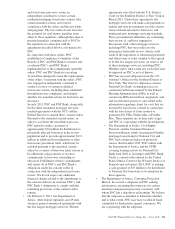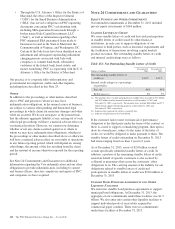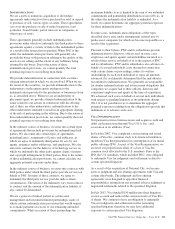PNC Bank 2013 Annual Report Download - page 221
Download and view the complete annual report
Please find page 221 of the 2013 PNC Bank annual report below. You can navigate through the pages in the report by either clicking on the pages listed below, or by using the keyword search tool below to find specific information within the annual report.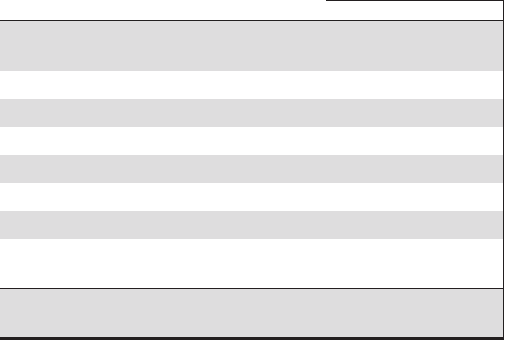
During 2013, PNC made an assertion under ASC 740 –
Income Taxes that the earnings of certain non-U.S.
subsidiaries were indefinitely reinvested. As of December 31,
2013, the company had approximately $46 million of earnings
and $39 million of foreign currency translation attributed to
foreign subsidiaries that have been indefinitely reinvested
abroad for which no incremental U.S. income tax provision
has been recorded. If a U.S. deferred tax liability were to be
recorded, the estimated tax liability on those undistributed
earnings and foreign currency translation would be
approximately $29 million.
Retained earnings at both December 31, 2013 and 2012
included $117 million in allocations for bad debt deductions
of former thrift subsidiaries for which no income tax has been
provided. Under current law, if certain subsidiaries use these
bad debt reserves for purposes other than to absorb bad debt
losses, they will be subject to Federal income tax at the
current corporate tax rate.
The Company had a liability for unrecognized tax benefits of
$110 million at December 31, 2013 and $176 million at
December 31, 2012. At December 31, 2013, $87 million of
unrecognized tax benefits, if recognized, would favorably
impact the effective income tax rate.
A reconciliation of the beginning and ending balance of the
liability for unrecognized tax benefits is as follows:
Table 149: Changes in Liability for Unrecognized Tax
Benefits
In millions 2013 2012 2011
Balance of gross unrecognized tax benefits
at January 1 $176 $209 $238
Increases:
Positions taken during a prior period 11 23 65
Positions taken during the current period 1 1
Decreases:
Positions taken during a prior period (22) (51) (62)
Settlements with taxing authorities (48) (1) (10)
Reductions resulting from lapse of statute
of limitations (7) (5) (23)
Balance of gross unrecognized tax benefits
at December 31 $110 $176 $209
It is reasonably possible that the liability for unrecognized tax
benefits could increase or decrease in the next twelve months
due to completion of tax authorities’ exams or the expiration
of statutes of limitations. Management estimates that the
liability for unrecognized tax benefits could decrease by $63
million within the next twelve months.
Examinations are substantially completed for PNC’s
consolidated federal income tax returns for 2007 and 2008 and
there are no outstanding unresolved issues. The Internal
Revenue Service (IRS) is currently examining PNC’s 2009
and 2010 returns. National City’s consolidated federal income
tax returns through 2008 have been audited by the IRS.
Certain adjustments remain under review by the IRS Appeals
Division for years 2003 through 2008.
PNC files tax returns in most states and some non-U.S.
jurisdictions each year and is under continuous examination
by various state taxing authorities. With few exceptions, we
are no longer subject to state and local and non-U.S. income
tax examinations by taxing authorities for periods before
2007. For all open audits, any potential adjustments have been
considered in establishing our reserve for unrecognized tax
benefits as of December 31, 2013.
Our policy is to classify interest and penalties associated with
income taxes as income tax expense. For 2013, we had a
benefit of $41 million of gross interest and penalties,
decreasing income tax expense. The total accrued interest and
penalties at December 31, 2013 and December 31, 2012 was
$45 million and $93 million, respectively.
N
OTE
22 R
EGULATORY
M
ATTERS
We are subject to the regulations of certain federal, state, and
foreign agencies and undergo periodic examinations by such
regulatory authorities.
The ability to undertake new business initiatives (including
acquisitions), the access to and cost of funding for new
business initiatives, the ability to pay dividends, the ability to
repurchase shares or other capital instruments, the level of
deposit insurance costs, and the level and nature of regulatory
oversight depend, in large part, on a financial institution’s
capital strength. The minimum U.S. regulatory capital ratios in
effect during 2013 under Basel I are 4% for Tier 1 risk-based,
8% for total risk-based and 4% for leverage. To qualify as
“well capitalized” under Basel I, regulators require banks to
maintain capital ratios of at least 6% for Tier 1 risk-based,
10% for total risk-based and 5% for leverage. To be “well
capitalized” under Basel I, bank holding companies and banks
must maintain capital ratios of at least 6% for Tier 1 risk-
based, 10% for total risk-based and 5% for leverage. At
December 31, 2013 and December 31, 2012, PNC and PNC
Bank, N.A. met the “well capitalized” capital ratio
requirements based on U.S. regulatory capital ratio
requirements under Basel I.
The PNC Financial Services Group, Inc. – Form 10-K 203



